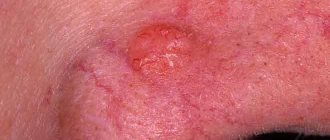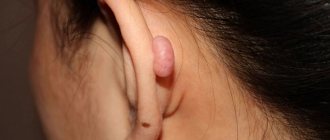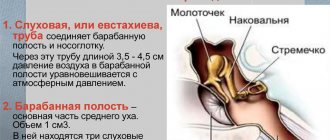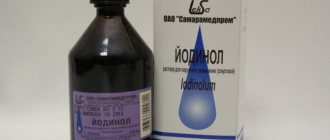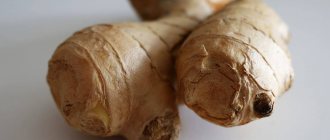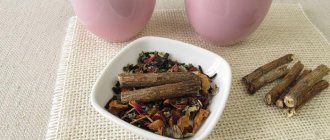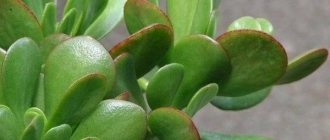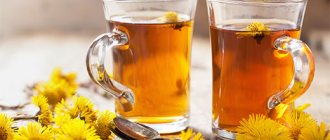Elecampane in cosmetology
Tinctures of the roots are good at tightening and toning the skin, so the plant is often used in cosmetology.
Systematic use of elecampane will help get rid of facial wrinkles and age-related pigmentation on the skin. Scrubs based on crushed horses clean pores well and remove dead epithelial cells, the skin structure becomes uniform. With the help of elecampane-based products and creams, you can get rid of acne. Ointments and decoctions promote rapid healing of post-burn, purulent wounds and abscesses, and also prevent bleeding of hemorrhoidal cones.
For hair, elecampane is added to shampoos to treat seborrhea, improve the condition of the hair structure and prevent its fragility. Infusion for rinsing:
- 2 tbsp. l. crushed raw materials (root);
- 200 ml boiled water;
- leave in a thermos for 1-2 hours and use to rinse hair after washing.
You can also add the infusion to the balm and apply to the scalp for 10-15 minutes and rinse under running water. Using this product twice a week will improve the hair structure and enhance its growth.
Face mask: take elecampane powder and natural honey in a 1:1 ratio. Apply for 30 minutes on the face and décolleté. Rinse off with warm running water, and after rinsing, rinse with cold water.
You can also prepare lotion:
- 50 g roots;
- 200 ml dry white wine;
- bring the mixture to a boil;
- remove from heat and wrap for 1-2 hours;
- filter and pour into a glass container with a lid;
- The lotion can be used daily to remove makeup.
Herbalists recommend making a macerate: pour the rhizome powder with olive oil or grape seed oil. Leave for 30 days. Use to nourish facial skin or add a few drops to nourishing cream.
For women's health
Many women are familiar with such an unpleasant and painful pathology as uterine prolapse. This disease can develop after childbirth or lifting heavy weights. This pathology can be cured with the help of therapeutic exercises of the vagina and tincture of elecampane with alcohol:
- 1 tbsp. l. herbs;
- 500 ml vodka;
- leave for 10 days;
- Take 1 tbsp in the morning on an empty stomach. l. tinctures.
This tincture can also be used in the treatment of cystitis, female inflammation and infertility. It is only necessary to increase the frequency of administration up to 3 times. For women who want to conceive a child, they should start drinking the tincture on the last day of menstruation.
You can also prepare the following tincture for the treatment of female pathologies:
- elecampane leaves;
- burdock leaves;
- dandelions.
Finely chop all components in equal proportions and mix well. 2 tbsp. l. pour 500 ml of vodka or 60% alcohol into the mixture. You need to insist for 20-25 days in a room without daylight. Twice a day you need to shake the container with the tincture. Drink 50 ml twice a day. You can add honey to the tincture before use, this will enhance its effect and reduce its strength.
Types of healing compounds
Each method of preparing medicinal raw materials activates and supplements certain substances in the composition of elecampane root and is aimed at treating a certain range of diseases. For example, to rub sore joints you need a tincture, and for a cough - a decoction or infusion.
Infusion
The infusion is the best remedy for treating diseases of the gastrointestinal tract. It has a tonic property, strengthening the immune system. It also effectively fights cough and viral diseases. The infusion can also be used for hypertension. It is also famous for its ability to cleanse the skin of various rashes.
To prepare the infusion, you need to pour 1 teaspoon of raw material with a glass of chilled water
It is important to use only boiled liquid. Infuse the liquid for 8 hours, then strain
Take 1/4 cup 20 minutes before meals 4 times a day.
Tincture
Tincture of elecampane roots also works well for treating the stomach and intestines. It improves food digestion and appetite. In addition, while taking the tincture, metabolism improves, which will be useful for people suffering from excess weight. It relieves inflammation in the joints, thereby relieving pain. The tincture is also often used to treat diarrhea. The drug does not ignore the liver, has a bile-forming and choleretic effect. For coughs and colds, this medicine can also be used. In addition, the tincture is most often used for external use for acne, blackheads and other skin problems.
To prepare a vodka tincture you will need 1 tbsp. a spoonful of raw materials and 0.5 liters of vodka. Pour the raw material into the bottle, mix and seal thoroughly. Next, place it in a dark place for 14 days, shaking it at least once a week. For external use, you can make the tincture a little more concentrated. Then you need to mix elecampane roots with vodka in a ratio of 1:10.
It is advisable to use the tincture only with the permission of a doctor. It has a number of contraindications associated with pregnancy, heart and vascular diseases. It should also not be used even for external use by children under 16 years of age.
Decoction
The decoction is most often used to treat the respiratory system; it effectively fights bronchitis, diluting and removing mucus. The decoction is used to make lotions for problem skin. The finished decoction can be poured into the bath to keep the skin young and healthy. It is also good for hair.
To prepare the decoction you need to take 1 tbsp. a spoonful of crushed roots and a glass of boiling water. Pour the raw material with water and place in a water bath. You can also cook it over an open fire, but the efficiency will be slightly lower. After boiling, boil it for 7–10 minutes, then turn off the stove and leave the broth for at least another 1–2 hours.
You can enhance the effectiveness of the decoction by adding other medicinal herbs to it.
Tea
Traditional medicine assures that if you drink tea from the roots of elecampane from time to time, you can forget about problems such as rheumatism, headaches and toothaches. Tea serves as a preventive measure for skin diseases and can also treat existing ones. In addition, it has a tonic effect and can be drunk to prevent colds and flu. It strengthens the immune system and saturates the body with essential substances.
To prepare tea, you need to grind 1 teaspoon of roots, pour a cup of boiling water and leave for 15 minutes. Take one cup at a time, adding honey, since the tea itself is bitter. You should not abuse this drink every day, since it is still a medicine.
You can also make tea from a collection of herbs. Elecampane goes well with St. John's wort, birch buds, thyme and calamus. You can also add rose hips, blueberries or raspberries to tea. This collection has a general strengthening effect, but you should consult your doctor before using it.
Ointment
In the form of an ointment, elecampane is used to treat skin diseases. It can also be used for joint problems. Preparing the ointment is easy; you only need a certain amount of powdered elecampane root and butter, but lard can also be used instead. Soften the butter until it has the consistency of sour cream. Then mix with the roots and stir. If you use lard, it must be boiled with chopped root.
Apply the ointment, without rubbing into the skin, in a small layer on the affected areas of the skin. You can enhance the effect of the drug by adding sorrel root to the elecampane root.
Oil
The oil is used to treat wounds. It can even heal ulcers on the body. To prepare it you will need 100 g of root, ground into powder, and 1 liter of sunflower oil. Mix the root with oil and place it against the sun for 15 days.
We recommend reading:
Recipes from fresh roots
Grind fresh elecampane roots. Fill two glasses of raw materials with half a liter of vodka. Let stand for nine days in a dark place. Take a tablespoon orally before meals for three months. This remedy is used for pulmonary tuberculosis, inflammatory processes in the appendage area in women, for diseases of the uterus and urinary incontinence. The product is used to gargle for sore throats and to lubricate the nose for a runny nose.
To strengthen weakened immunity and tone the body, prepare such a tincture. Pour 120 grams of chopped fresh roots with red wine (half a liter). Boil the product over low heat for ten minutes and strain. Drink 50 milliliters three times a day.
What do you need to remember?
In order to prevent unpleasant complications from continuing traditional treatment, it is recommended to remember a few simple rules. Fulfilling the following requirements will help you get the maximum benefit:
- prepare tinctures, decoctions, infusions strictly according to the recipe, exceeding the number of components is not allowed;
- use the formulations at the appointed time, do not increase the number of home medications taken;
- When used externally, monitor the reaction of the dermis - the skin with increased sensitivity can respond to the herb with side effects.
Another rule is not to start treatment without a medical examination. If drug therapy is recommended in the fight against joint ailments, discuss complex treatment with a specialist.
Elecampane is a plant that effectively affects all joint ailments. With the correct use of herbal medicines, it will be possible to quickly eliminate all signs of diseases, increase the effectiveness of pharmaceutical drugs, and protect bone tissue from damage and the destructive work of bacteria.
The main thing is to follow the recipes of traditional medicine, this will allow you to avoid unpleasant complications, consult a doctor at every stage of the impact on the disease.
Description of the plant
Before you learn how to prepare elecampane root, we offer some information about the plant itself. Elecampane is popularly called a wild sunflower. The plant belongs to the Asteraceae family. Among numerous medicinal herbs, it can be distinguished by its thick, fleshy rhizome with long roots, in which the main beneficial substances are hidden.
Elecampane enjoys success not only among traditional healers - it has also found application in official medicine. In the upper part, the stems of this plant are few-branched, angular and straight. The roots are quite large (up to 50 cm). They are elongated with pointed tips.
The flowers, which are yellow or have rich orange hues, are collected in baskets, which are located at the tops of the branches and stem. They are about 8 cm in diameter. Elecampane blooms in July–August. This is a tall (up to two meters) perennial plant. In reality it is a grass, although it looks like a separate bush.
Description of the medicinal plant
Elecampane is a beautiful perennial herb with a branched, tall stem. The leaves are whole, oval, juicy dark green. The root and, less commonly, the herb are used for medicinal purposes. The collection can be purchased at a pharmacy. The root is washed and dried in a special dryer at 40 degrees. After drying, it is crushed and used for tincture with alcohol. Application is external or internal, according to indications. Treatment of gastritis, colitis and constipation should be carried out after examination by a gastroenterologist. With atonic constipation and reduced acidity of gastric juice, elecampane will cause a deterioration in the patient’s well-being. For spastic constipation and increased acidity of gastric juice, elecampane will have a beneficial effect on digestion and help you feel better. Vodka tincture has contraindications and can cause headaches and irritation of the gastrointestinal mucosa.
Ointments for skin diseases
Elecampane ointments have proven themselves well. How to prepare such a composition? The root of the plant and the root of horse sorrel need to be crushed to a powdery state. A spoon (tablespoon) of these powders is mixed in a container and high-quality and fresh softened butter is added to obtain a mass with a consistency reminiscent of thick sour cream. The medicine is ready for use.
Apply a thin layer, without rubbing, to areas affected by dermatitis, eczema, psoriasis, twice a day. This drug relieves inflammation and itching.
The ointment can be used differently - it is mixed with lard or olive oil and thoroughly fried. Then spread the resulting mixture on natural cotton fabric and place it on the problem area.
On non-healing wounds and ulcers, you can apply a leaf of elecampane that has just been picked and slightly crushed so that the juice comes out. This treatment is effective for erysipelas and scrofulous inflammations.
To prepare a medicinal extract of elecampane in vegetable oil, you should take one part of elecampane root and ten parts of any vegetable oil, mix well and leave in the sun for two weeks. Scientists have proven that preparations made from elecampane root extract successfully heal festering wounds and are effective against neurodermatitis and dermatitis.
The use of elecampane root in folk medicine
Both fresh and dry roots of the plant are used to prepare medicinal products.
Elecampane for muscle pain, joint pain and radiculitis
The root is good to use in the form of compresses and taken orally as an anesthetic for joint and muscle pain; it is indicated for rheumatism, gout, and arthritis.
Painkiller recipe: Place crushed dry root (100 g), 0.5 kg, in a three-liter jar. natural honey, raw yeast (100 gr.). Pour heated water over everything and put on a rubber glove with a couple of punctures. Place in a warm place to ferment for three weeks. The finished product is consumed in the morning and evening, 1/2 cup.
Elecampane for the digestive system
An infusion of roots normalizes the activity of the gastrointestinal tract, liver, and pancreas. Indicated for intestinal disorders (constipation or diarrhea), intestinal colic, ulcerative processes of the stomach and duodenum, hepatitis, flatulence.
Elecampane for coughs, colds and tuberculosis
drinks with the root will help you warm up, relieve cold symptoms, and activate the body’s immune system
For coughs and colds - the antispasmodic and expectorant properties of elecampane have a positive effect in the treatment of coughs due to influenza, colds, and bronchitis. The root is useful for obsessive coughing and asthma; it is part of a chest tea; it thins and removes mucus well. As a diaphoretic it helps with high body temperature.
For skin diseases
The root is a natural antiseptic; these properties are used in the treatment of dermatitis, eczema, lichen, scabies, purulent wounds, boils, bedsores. Compresses and lotions are made with the plant to eliminate pain, itching and redness. Fresh leaves are applied to wounds to stop bleeding.
Elecampane for women and men
drinks with elecampane will have a beneficial effect on maintaining the health and beauty of the fairer sex
For women - elecampane has a positive effect on women's health. The properties of the plant to activate intestinal motility and metabolic processes are used to get rid of extra pounds.
To prepare the product 2 tbsp. l. pour a glass of boiling water over the roots and leave overnight. Take 1/2 cup in the morning and at night. The filtered cake is poured with boiling water and a teaspoon of cognac is added and allowed to brew overnight. The next day, take it in the morning and evening, and so the course continues.
The healing properties of elecampane for men - the plant can prolong physical and sexual youth, activate sperm, improve the composition of sperm, and relieve inflammatory processes in the genitourinary system.
At the pharmacy you can buy ready-made cough syrup with elecampane for children, it is sweet, has a pleasant aroma and will be to the taste of the child
For children - elecampane will help cope with colds, coughs, bedwetting, and helminths.
In cosmetology
The plant has a healing and rejuvenating effect on the skin - it fights wrinkles, sagging, gives skin tone and elasticity, has a cleansing effect, and gets rid of acne and blackheads.
For rejuvenation – 1/2 l. dry white wine, add crushed dry roots (50 g), boil for 10 minutes over low heat. Use the strained product to wipe your face twice a day.
For cleansing – 200 ml. vegetable oil, lower the crushed St. roots (50 g), remove to infuse in a warm and dark place for a week. Apply the strained product to problem areas of the skin for 15-20 minutes, then remove the residue with a cotton pad.
For hair - the plant helps in hair care, strengthens, stimulates growth, fights dandruff. To do this, crushed roots (2 tablespoons) are steamed with half a liter of boiling water and left for 1/2 hour. The strained product is used to rub into the skin and hair roots, keep the mask on for 30 minutes, then wash off with shampoo. You can enrich the healing infusion with nettle and burdock (two tablespoons each) - this will increase the healing effect.
Medicinal properties of elecampane tincture
The medicinal properties of elecampane tincture (read about contraindications below) are due to its rich chemical composition:
- inulin;
- essential oils;
- slime;
- vitamin E;
- saponins;
- alkaloids;
- gum;
- manganese;
- magnesium;
- potassium;
- calcium;
- iron.
You can buy elecampane in a pharmacy or prepare it yourself. Thanks to its composition, elecampane tincture is used to restore strength and maintain the immune system.
The product has a positive effect on the liver, removes heavy metals, toxins and excess cholesterol from the body, normalizes metabolic processes, water-salt and mineral balance. The medicine is prescribed to strengthen bone tissue and prevent blood clots. The tincture has a diuretic, anti-inflammatory and antiseptic effect. It has astringent and expectorant properties, relieves pain and spasms. Helps heal wounds faster. Elecampane root tincture is indicated for the following diagnoses:
- diabetes;
- tuberculosis;
- bronchitis;
- ARVI;
- whooping cough;
- gastritis;
- stomach and duodenal ulcers;
- reduced acidity of gastric juice;
- diarrhea;
- constipation;
- flatulence;
- helminthic infestation;
- jaundice;
- atherosclerosis;
- dropsy.
Elecampane is tall. Botanical description and characteristics of the plant
photo of a blooming elecampane in its natural habitat
Habitat of growth, chemical composition and beneficial properties of the plant
Description: elecampane grass is a plant reaching 2 meters with an erect grooved stem, elliptical large basal leaves with denticles along the edges, tapering towards the top of the plant, covered with tomentose pubescence. The rhizome is short, thickened with small lateral shoots, has healing properties, a unique aroma and a bitter-burning taste. It blooms with yellow tubular-ligulate flowers collected in a brush. The flower is similar in appearance to a sunflower, but smaller in size. In autumn the fruits ripen - oblong achenes with brown tufts.
Where it grows: the elecampane plant grows in the forest-steppe and steppe zones of the European part, Kazakhstan, Central Asia, Africa, Europe, the Caucasus, the Urals and Western Siberia.
Elecampane is grown as an ornamental plant to decorate the landscapes of parks and squares
Chemical composition
The plant contains a lot of substances beneficial to the body:
- Essential oil;
- Saponins;
- Inulin (up to 44%);
- Polysaccharides;
- Alkaloids;
- Gelenin;
- Vitamins E and C;
- Resins, mucus, bitterness, gum, pectin.
Elecampane root - medicinal properties and contraindications
Elecampane has the following beneficial properties:
- Antiseptic;
- Choleretic;
- Antispasmodic;
- Anti-inflammatory;
- Hemostatic;
- Expectorants;
- Diuretics;
- Anthelmintic.
the plant, due to its rich chemical composition, has a wide range of medicinal effects on the human body
Benefits of the plant
- Has a beneficial effect on the digestive organs;
- Slows down intestinal motility and secretory activity;
- Stimulates the formation and secretion of bile;
- Increases blood circulation in the gastric mucosa;
- Increases the amount of bound hydrochloric acid and reduces the content of pepsin;
- Normalizes metabolism;
- Improves the process of digestion and absorption of food;
- Strengthens capillaries and accelerates the regeneration of the gastric mucosa;
- Inulin cleanses the body of harmful substances and heavy metals;
- Invert sugar is converted into a glucose isomer and replaces sugar in people with diabetes;
- Reduces intoxication in case of poisoning;
- Reduces the frequency and amplitude of heart contractions;
- Calms the nervous system, improves mood;
- Reduces pain in joints and spine;
- Improves calcium absorption, strengthens bone tissue;
- Helps with diseases of the upper respiratory tract, has an antiseptic and expectorant effect;
- Fights skin diseases;
- Helps with solving gynecological problems;
- Stimulates sexual potency;
- Increases appetite;
- Used in cosmetology for skin and hair care.
What does elecampane treatment help with?
properly prepared raw materials have all the beneficial properties of fresh roots
The use of elecampane will have a positive effect on the following diseases:
- Peptic ulcer of the stomach and duodenum;
- Bronchitis, pneumonia, cough with sticky sputum;
- Diseases of the liver and gall bladder (pyelonephritis, cholecystitis, jaundice);
- Rheumatism, radiculitis, gout;
- Cold infections;
- Diabetes;
- Failure of the menstrual cycle;
- Hypertension;
- Inflammation of the sciatic nerve;
- Diarrhea and constipation;
- Bone tuberculosis;
- Neurodermatitis, eczema, scabies, boils;
- Wasting and goiter.
Contraindications
It is not recommended to take the plant if:
- Chronic kidney pathologies;
- Increased blood viscosity and tendency to thrombosis;
- Severe lesions of the cardiovascular system;
- Atonic constipation;
- Pregnancy;
- Children under 3 years of age;
- Individual intolerance.
Collection and preparation of elecampane
in order to obtain high-quality raw materials, roots should be harvested in environmentally friendly places, away from highways and landfills
The roots are harvested in the spring before flowering or in the fall; plants are chosen that are at least 3 years old; they contain the largest amount of biologically active substances. Elecampane is dug up, the roots are cleared of soil, washed, and small branches are removed. The prepared roots are cut into pieces and dried in fresh air in a well-ventilated place protected from direct sunlight or in an electric dryer. The finished raw material breaks easily; when cut, it has a yellow-white color with shiny specks - these are accumulations of essential oils. The taste of the roots is bitter-spicy.
Description of the plant
The herbaceous plant is a perennial and belongs to the Asteraceae family. The stem reaches 2 meters in height. The root is succulent, large and often multi-headed. The stem is hairy.
Blooms from late spring to early autumn. Ripens from August to October. It grows in deciduous and pine forests, along the banks of rivers and lakes. The 3-year-old plant has the greatest value. It contains the highest concentration of vitamins, microelements, and beneficial compounds.
Only the rhizome is used as medicine. Darkened and damaged areas are cut off. After washing the root, cut it into slices.
From elecampane you can:
- make a decoction
- make a tincture
- prepare a cream or ointment
- make tea
- arrange a bouquet
- make jam
Elecampane root use
The plant is included in various folk recipes that help with numerous ailments. It is recommended for diseases of the upper respiratory tract and tuberculosis. The use of elecampane will help with problems with the gastrointestinal tract and the genitourinary system. You can take decoctions and infusions for hypertension, jaundice, bronchial asthma and diabetes. This is just a small list of diseases for which roots help.
Elecampane for cough
It was mentioned above that the plant is effective for problems with the respiratory system, since it destroys bacteria, relieves spasms and inflammation, and also strengthens the immune system and has an expectorant effect. Elecampane grass helps with bronchial diseases. The infusion is recommended for dry coughs, as it will dilute accumulated mucus.
There are two options for how to take elecampane for coughing:
- For bronchitis, it is recommended to drink a decoction, consuming 2 teaspoons every hour. Within a day, sputum will begin to disappear. To make a decoction, you need to pour 1 teaspoon of raw material into 1 glass of water, place in a water bath, boil and boil for half an hour. All that remains is to strain and add warm water to get the original volume of liquid.
- For colds and inflammation, it is better to drink the infusion, and this should be done 2 tablespoons at least three times a day. To prepare it, pour 1 teaspoon of elecampane root into 200 ml of warm water, cover and leave for 10 minutes. Then strain and add a little honey.
Elecampane root to induce menstruation
This plant contains phytohormones similar to human hormones, so they have a beneficial effect on the female reproductive system and help with menstrual irregularities. You should not use elecampane root to terminate a pregnancy, as it is dangerous and can cause serious consequences.
Recipe for inducing menstruation
Ingredients:
- crushed oman roots - 1 tsp;
- water - 150 ml.
Preparation, use
- Take 1 teaspoon of chopped roots and pour 150 ml of water over them. Place everything on the stove over moderate heat.
- Boil and cook for 15-20 minutes. After this you need to leave for about 4 more hours.
- You need to take elecampane root 1 teaspoon throughout the day. The effect should be expected after 1-2 days.
Elecampane root for joints
The benefit for the joint tissue of the plant is due to the fact that it contains substances that will improve the process of restoration of cartilage tissue. This folk remedy will help reduce pain and relieve inflammation. Oman roots are used to make ointment.
Recipe for joints
Ingredients:
- oman roots - 2 tbsp. l.;
- honey - 2 tbsp. l.
Preparation, use
- Combine the roots in equal quantities with honey. Leave everything to steep for a week.
- After this, rub the finished product into the joint, but you can also take 1 teaspoon of it orally, but only dilute it in water first.
Elecampane root for hair
Since the plant has a good anti-inflammatory and restorative effect, it can be used for cosmetic purposes, for example, to care for hair. A decoction of elecampane helps to cope with dandruff, severe itching, hair loss, dullness, and also dryness. In addition, it will accelerate growth, add shine and make the curls more vibrant.
Elecampane root for hair - recipe
Ingredients:
- elecampane roots - 1 tbsp. l.;
- water - 1 l.
Preparation, use
- Take 1 tbsp. spoon and pour 1 liter of boiling water. Cover with a lid and leave for 20 minutes.
- After this, strain the infusion several times so that the herb does not get stuck in your hair.
- When you wash your hair, complete the procedure by rinsing with the prepared product. If possible, it is better to generally hold the strands in the beneficial liquid for 10 minutes. There is no need to rinse off anything, just blot with a towel and that’s it.
- For the best effect, it is recommended to combine this procedure with taking the herb internally.
Elecampane root for men
Traditional medicine can be used by men who have problems with fertilization. Good results are obtained from treatment with elecampane, which helps increase potency and the production of male hormones. In addition, the plant helps with diseases of the urinary system, prostatitis and gout.
For men, the following products should be used:
- Pour 2.5 tbsp. spoons of dry raw materials 400 ml of water and boil after boiling for 20 minutes. The decoction should be taken 1 tbsp. spoon every two hours.
- The indicated amount of the plant can be brewed in a thermos, then the infusion should be taken according to the scheme: drink for two days and take a break for the same amount. During treatment it is recommended to abstain from sexual relations.
Preparing roots for tincture
It is recommended to dig up the roots in the autumn season. Since over the summer they are saturated with various useful substances. The rhizomes are cut into circles, laid out on paper and dried in the sun for three days.
This is interesting: St. John's wort tincture on moonshine
It is forbidden to dry elecampane in the oven! Otherwise, too high a temperature will destroy all the healing components of the plant. A tincture of prepared roots is prepared according to different recipes. Not only dry roots are used, but also fresh ones.
Medicine prescriptions
Today, on the Internet and in specialized literature, you can find dozens of options for elecampane tincture, which are easy to prepare at home. However, before starting treatment for any disease, you should carefully read the contraindications and consult your doctor. After all, an alcohol tincture of elecampane, if the dosage is not observed, will not only not help alleviate the symptoms, but will also cause harm to the body.
Recipe No. 1
Make a tincture of elecampane, which will be an excellent aid in the treatment of diabetes,
dropsy and jaundice, quite simply. To prepare the product you will need:
- dry rhizomes - about 40 g;
- vodka or diluted alcohol – 0.5 l.
Pre-dried and finely chopped plant roots are placed in a glass container and filled with alcohol. After this, the drink should be infused for several days in a place inaccessible to sunlight. The elecampane tincture must be shaken from time to time and passed through a cotton filter before use.
It is necessary to take a natural remedy made from elecampane with vodka in a dosage of 20–30 drops 3 times a day. The first results of treatment can be observed after 3–4 weeks.
Recipe No. 2, or a cure for tuberculosis
This drink will be an effective addition to the main treatment of tuberculosis. Approximately 250–300 gr. Elecampane root (it must be fresh) is grated or finely chopped, and then poured with 3 glasses of vodka. The resulting mass should be thoroughly stirred and allowed to brew for 7–10 days. When the product is ready, begin to use it one tablespoon before each meal. Treatment should be a course - 2-3 months of taking the medicine, and then 3-4 weeks off.
Recipe No. 3
An effective antiviral agent can be prepared from elecampane using vodka.
Drinking this drink during cold and flu season will boost your immunity, and if you are already sick, it will help get you back on your feet as quickly as possible. For the tincture you will need:
- plant root – 30 g;
- medical alcohol - 1 glass.
Elecampane rhizomes should be crushed and poured with alcohol (it must first be broken so that the strength of the drink is no more than 70%). Then the product is put away in a dark place for a week and a half. The elecampane tincture needs to be stirred periodically. Drink half a teaspoon of the finished product half an hour before each meal.
Recipe No. 4. Another remedy for immunity
For those who cannot stand the taste and smell of elecampane tincture with vodka, we can recommend another option for a restorative drink. Its preparation will not cause difficulties, and the ingredients (wine and dry plant root) can be obtained at the nearest store or pharmacy. First you need to take a small amount of elecampane rhizomes, chop them with a knife and put them in a pan. You need to pour 0.5–0.7 liters there. wine or port. The resulting mass should be cooked over medium heat for 15 minutes, then cooled and passed through a cotton filter. This elecampane tincture should be consumed no more than 2 times a day, one glass.
Recipe No. 5. External remedy
Various skin diseases, inflammations and wounds can be cured with
elecampane ointment. To prepare it, you need to take the dry root of the plant, grind it into powder and mix it with rendered pork fat in a ratio of 1:5. For greater convenience and uniformity of the composition, place the ointment in a metal container and heat over low heat, stirring constantly.
Contraindications
In addition to the beneficial effects, products based on elecampane also have contraindications. Tinctures and decoctions from this plant should not be taken by people who have been diagnosed with:
- serious cardiovascular diseases;
- kidney disease;
- acute gastritis with low acidity and ulcers;
- painful and heavy menstruation;
- individual intolerance.
During pregnancy and breastfeeding, elecampane drinks should also be avoided.
Elecampane photo medicinal properties and contraindications - it is advisable for anyone who decides to try the healing effects of a unique herb to know this. Elecampane
- a medicinal perennial plant, the medicinal properties of which have been known for a long time. At all times, it was believed that the herb was capable of saving adults and children from nine ailments, including the evil eye, hence the name, but now, both in folk and traditional medicine, many more diseases are known that the perennial can cope with.
Recipes for making elecampane tincture with vodka
There are many recipes for making elecampane tincture. Moreover, some of them may turn out to be surprising and unfamiliar.
Everyone is accustomed to the fact that tinctures are made with alcohol or vodka, but in fact, not only with them. Some people make it with wine or mash.
Recipe 1. You need to take about 40 grams of elecampane roots and chop them. After this, pour half a liter of vodka. Place the container with the resulting mixture in a dark place for two days, shaking occasionally. After two days have passed, the tincture must be strained to remove the roots, and then first taken 25 drops half an hour before meals. This tincture is recommended for diabetes, dropsy, and jaundice.
Recipe 2. You need to take fresh roots of the plant and grate them on the finest grater. After this, separate about 2 glasses and pour half a liter of vodka. Mix all this well and put it in a cool and dark place for 10 days. After the time has passed, you can start taking it. This recipe is used mainly during the treatment of tuberculosis. You need to take one teaspoon before each meal.
More information about the medicinal properties of elecampane can be found in the video.
When and why is Streptocide prescribed?
Recipe 3. You need to take 20 grams of roots, grind or chop (optional), then pour in alcohol with a strength of at least 70 degrees (150 grams). After this, you need to put it in a dark room for ten days. Be sure to remember to shake the liquid, because otherwise it will not infuse. After ten days have passed, the tincture should be filtered and taken 20 drops 20 minutes before meals. This tincture is recommended for use for colds and acute respiratory viral diseases, for heart problems, and for high blood pressure.
Recipe 4. You need to take the roots and chop them finely (about 50 grams), then pour in half a liter of vodka and let it steep for two weeks. Moreover, the place must be chosen so that the container is not exposed to sunlight. After everything has infused, you need to strain and take 20 drops 3 times a day half an hour before meals. This tincture is used for diseases of the gastrointestinal tract, goiter, and nervous diseases.
In any case, before you start preparing the tincture, you need to talk with more experienced people or with your doctor so that he can advise which one to use so that it brings benefit and not harm.

